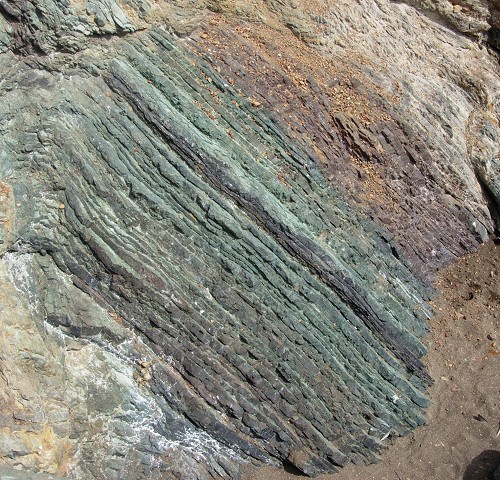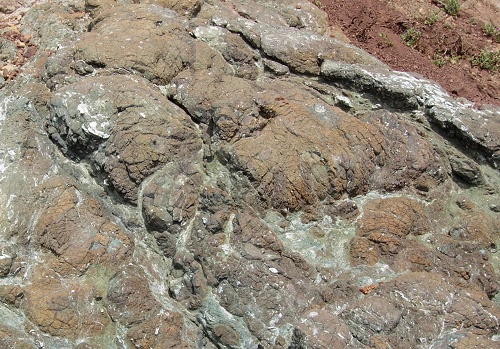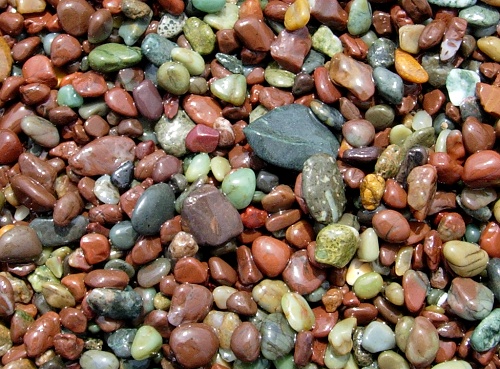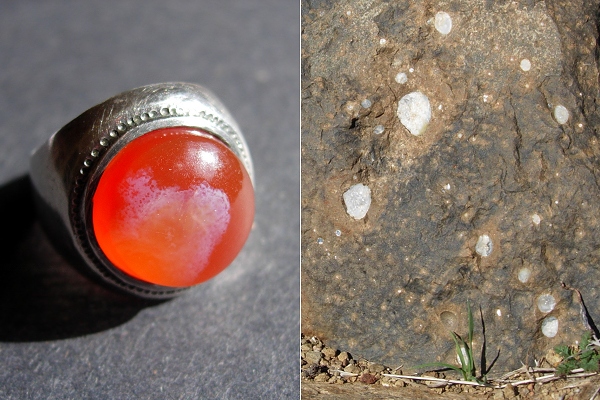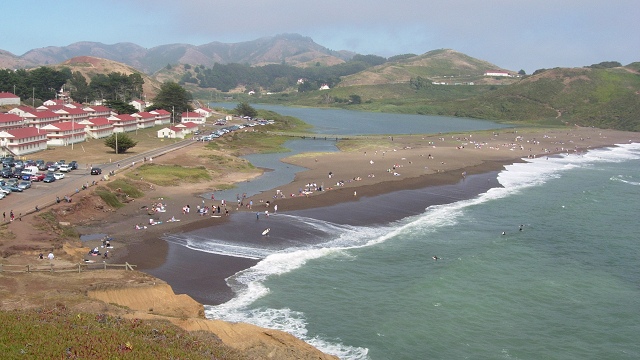
The strait called the Golden Gate has beaches on both sides of its seaward end. On the south side, in San Francisco, are Baker Beach and Ocean Beach, which are made of fine sand derived mostly from the Sierra Nevada. On the north side in Marin County is little Rodeo Beach, which is not. Rodeo Beach is small but has a lot to see.
Rodeo Beach is next to old Fort Cronkhite in the Golden Gate National Recreation Area, situated between the sea and the valley of Rodeo Creek. The beach qualifies as a bar, the geographer's term for a pile of sediment that crosses the mouth of a river. As you can see in the top photo, Rodeo Creek is dammed behind the beach to form Rodeo Lagoon, but some of the water from the lagoon manages to spill across the beach at its north (left) end into Rodeo Cove.
Rodeo Creek supplies no sediment to the shoreline. Instead, the beach's sand and gravel is manufactured on the spot from the local bedrock of the Franciscan Complex, which crops out in steep coastal bluffs on either side. Before you study the beach itself, take a look at these rocks. There are three main Franciscan rock types at Rodeo Beach that you can easily distinguish: on the south side (see below) are chert and basalt and on the north side is sandstone.
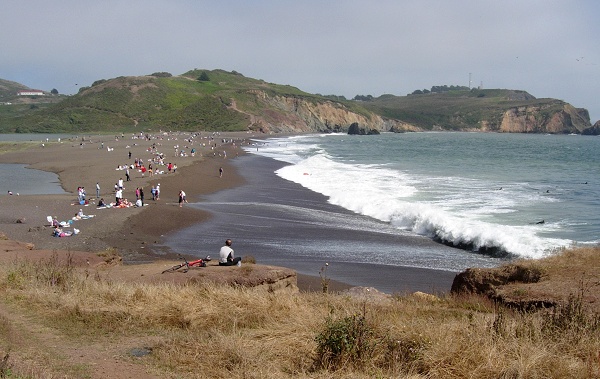
Chert is the most obvious of the three, a hard, flinty stone arranged in hundreds of thin layers. This is the same deep-sea ribbon chert visible along Conzelman Road as you arrive through the Marin Headlands, but here parts of it have been turned green and even bluish colors by the pressure and chemical action of metamorphism.

